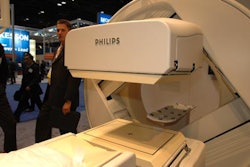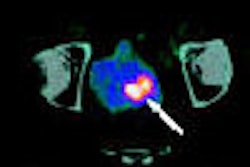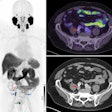Dear AuntMinnie Member,
Molecular breast imaging -- also known as scintimammography -- has failed to light up the breast imaging world, despite its having been around for more than a decade. Although the technique has some advantages, it has generally been limited in its ability to detect smaller cancers.
Now a team from the Mayo Clinic in Rochester, MN, believes it may have come upon a better alternative with a new scintimammography design that uses a pair of solid-state digital gamma camera detectors on a modified mammography gantry. Staff writer Jonathan S. Batchelor reports on the system in our Molecular Imaging Digital Community.
In a poster presentation at last month's RSNA show, Mayo researchers discussed results based on experiences with the system in patients with suspected lesions smaller than 2 cm that were initially identified by mammography or ultrasound.
They found that the dual-head design turned in sensitivity ratings higher than 93% for tumors larger than 6 mm, and also performed well in identifying a wide range of breast cancer types. Get more details on the technology by clicking here.
In a second article we're featuring in the community this week, Swedish investigators report on their use of PET to sniff out the causes of abnormal odor perception in patients with mesial temporal lobe epilepsy (MTLE). These patients may have widespread limbic dysfunction, which PET can help detect, according to the study. Get the rest of the story by clicking here.




















